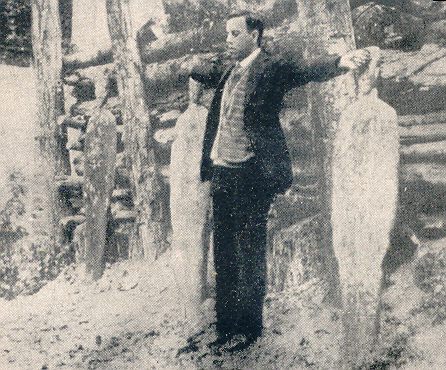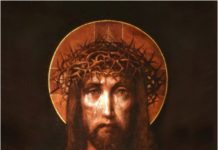Propitiously, we celebrate a triptych of saints on this November day:
The first, in time, was Saint Clement (+99 A.D.), traditionally accepted as the third Pope after Saint Peter’s inaugural reign, following Linus and Cletus, as is recited in the Roman Canon (although other traditions place him as the immediate successor to Peter). He is primarily known for his famous letter to the Corinithians (ca. 96), which was so beloved that it was nearly accepted as part of the canon of Scripture (it was eventually placed in the breviary). This letter, besides its great spiritual value also offers an invaluable window into the earliest days of the Church, which was from its very beginning constituted as a structured society under the Roman Pontiff, with universal authority.
Saint Columbanus (+615) was a fiery, zealous, impetuous Irishman (what other kind is there?), back then, confusingly, called a ‘Scotus’ (hence, the later scholastic Blessed Duns Scotus was also Irish). From his youth, Columbanus dedicated himself to the monastic life in his native country, before venturing forth in his fortieth year as a missionary to what we now know as Europe. By way of Scotland, he made his way to France, and eventually Italy, where he set up monastic foundations which stood for centuries, producing innumerable saints. Although often in conflict with bishops and other authorities, Columbanus was beloved by all (even the birds and animals, like the later Saint Francis, would rest in his monastic cowls), and always displayed a love and obedience for the Church, declaring in one of his many letters:
We Irish, though dwelling at the far ends of the earth, are all disciples of Saint Peter and Saint Paul … we are bound to the Chair of Peter, and although Rome is great and renowned, through that Chair alone is she looked on as great and illustrious among us … On account of the two Apostles of Christ, you are almost celestial, and Rome is the head of the whole world, and of the Churches.
Columbanus died peacefully at the monastery of Bobbio, which he had founded a year before, in 614. As a testament to this Irish saint’s wisdom and holiness, the abbey flourished for centuries, before finally being suppressed in the French administration under Napoleon in 1803.
Finally, today is also the traditional commemoration of Blessed Miguel Pro, (+1927), a Jesuit missionary, martyred in Mexico on this day in 1927. A very charismatic man (one of his companions declared that he “had never seen such an exquisite wit, never coarse, always sparkling”) Miguel supported and converted an untold number of souls in the midst of the fierce socialist persecution under the anti-Catholic president, Plutarco Elias Calles. The 1917 constitution instantiated a number of laws aimed at suppressing the Church, but they were intermittently enforced, that is, until the tragic reign of Calles, who enforced them all too well.
After a very fruitful, but brief, apostolate in his native country, lasting only one year, Miguel was arrested and executed by firing squad without a trial. Calles had all of it photographed, hoping this would dissuade the Cristeros, who were rebelling against his unjust rule. As might have been expected, the photographs had the opposite effect, emboldening those fighting for the faith.
Before being shot, Miguel asked to pray, then raised his arms in cruciform fashion, declaring:
May God have mercy on you! May God bless you! Lord, Thou knowest that I am innocent! With all my heart I forgive my enemies! Viva Christo Rey!
Long live Christ the King! A fitting rallying cry as we prepare for that great solemnity in a few days, to end off this liturgical year, as we all journey one step closer to heaven.












